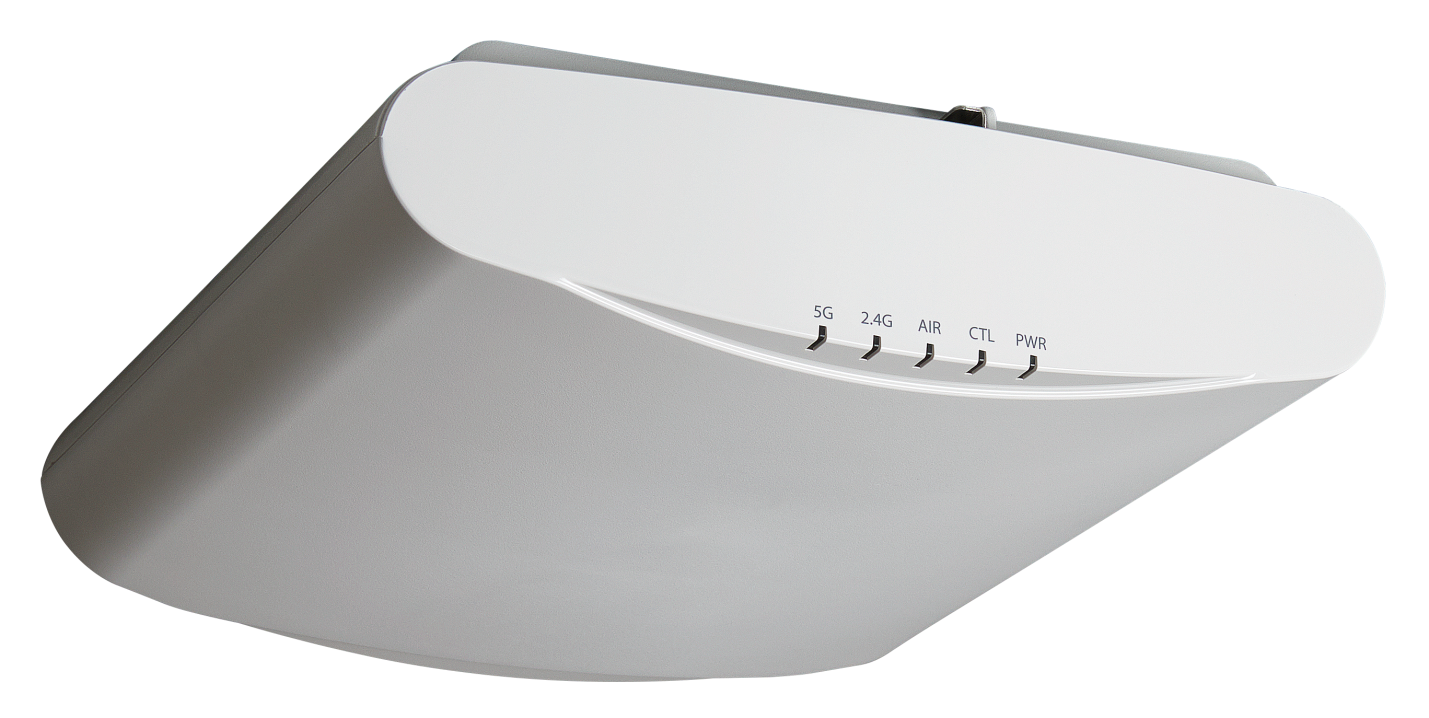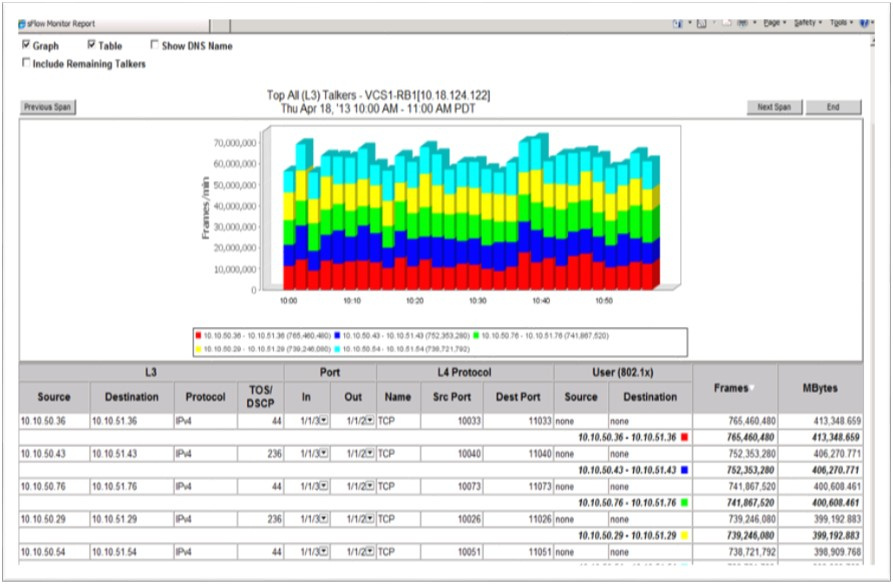SCS Protection Day - how to remove more gigabits from Wi-Fi
When 802.11ac had just begun its expansion into the wireless network market, very often the engineers of our company were asked the question: “How is it: a 5 GHz access point gives a bandwidth of 1.3 Gb / s, and even 2.4 GHz 300 Mbps, and there is only one Ethernet port at the point, it's bottleneck! ” At first, answering this question was relatively simple, but with the release of 802.11ac Wave 2, the answer “Ethernet is gigabit duplex, and in 802.11ac one and a half gigabit simplex without headers” was not enough. Today, under the cut, we answer an epochal question - how to cut a bottleneck along?

Wave 2 is the ninth shaft of wireless client access networks: Wi-Fi, which has overtaken Ethernet in terms of bandwidth throughout its history, entered the end-consumer market earlier than copper “super-gigabit” Ethernet. Take, for example, not the newest Ruckus R710 access point: the maximum channel speeds for its 4x4: 4 configuration are 1733 Mbit / s at 5 GHz and 800 Mbit / s at 2.4 GHz. Even taking into account that it is difficult to find a 2.4 GHz 802.11n client with more than two streams, in total we still get a little more than 2 Gbit / s channel speed (this is MU-MIMO - all four independent 5 GHz streams they are utilized regardless of the number of threads on the client, because now access points can work with several clients at once). Even throwing up optimistic 30% bandwidth on headers, retries,
What can be done when planning such a wireless network, provided that the SCS "on gigabit" has been installed and operated for a long time? There are three obvious ways:
The most budget option - of course, the first, the most expensive - of course, the third, but about the second a number of questions arise. The final cost of such a half-modernization, so to speak, SCS is very dependent on a number of factors: TD installation locations are not always easily accessible, plus on access switches it is not always possible to find as many ports as are already used for Wi-Fi networks. Therefore, a logical question arises - how to do without making changes to the wired part of the network? Is it possible to "ride" Wave 2, and save on upgrading SCS? Of course, I would not ask this question without suggesting an elegant answer to it. Can.

Recently, Ruckus Wireless announced the new R720 AP, which, along with wonderful, but quite expected for people who monitor the Wi-Fi systems market, innovations like MU-MIMO in the 4x4: 4 receive-transmit configuration (four receivers, four transmitters, four independent data stream) and a USB port for installing Bluetooth Low Energy beacons carries on board an interesting configuration of the “cable” part. Along with the classic 10/100/1000 Ethernet port, a network adapter is also installed that complies with the IEEE 802.3bz standard, which was approved not so long ago, in September 2016. For more details, if interested, you can read about this standard right here or right on the IEEE website . If in a nutshell, then this is 2.5 Gbps per 100 meters directly on the twisted pair of the fifth category!
Naturally, on the “other side” of the patch cord from the AP there should be a switch that also knows how to work with the new Ethernet standard. Multi Gigabit switches have already appeared in the lines of many vendors, and Brocade, the stepfather of Ruckus Wireless, has not lagged behind. Almost simultaneously with the new R720, the Ruckus branded Brocade switch was introduced with the ICX 7150 Z-Series.

Regarding the main functionality, you can not go to a fortuneteller - 16 Multi-Rate 10/100/1000 / bz ports and 32 10/100/1000, PoE + ports on each port with a total budget of up to 1480 W (with two optional power supplies), and There are also eight SFP / SFP + ports for uplink and / or stacking switches. And, of course, how can I not say about the possibility of adding BNA ( Brocade Network Advisor to the system)) Ruckus APs and controllers - the entire wireless network is now monitored from a single NMS up to client traffic (I apologize for a too good screenshot - this is an example from the manufacturer’s website).

The set of functions of the new Ruckus switch is familiar to all Brocade switches - if you are interested in any particular parameter and / or option, you can always look at the manufacturer’s website if you need dry numbers, or in our article , which has a slightly convenient theory and features of the switching equipment Brocade. In short - this is an access switch, according to the supported features it is fully consistent with the expectations from the access switch in 2017.

Wave 2 is the ninth shaft of wireless client access networks: Wi-Fi, which has overtaken Ethernet in terms of bandwidth throughout its history, entered the end-consumer market earlier than copper “super-gigabit” Ethernet. Take, for example, not the newest Ruckus R710 access point: the maximum channel speeds for its 4x4: 4 configuration are 1733 Mbit / s at 5 GHz and 800 Mbit / s at 2.4 GHz. Even taking into account that it is difficult to find a 2.4 GHz 802.11n client with more than two streams, in total we still get a little more than 2 Gbit / s channel speed (this is MU-MIMO - all four independent 5 GHz streams they are utilized regardless of the number of threads on the client, because now access points can work with several clients at once). Even throwing up optimistic 30% bandwidth on headers, retries,
What can be done when planning such a wireless network, provided that the SCS "on gigabit" has been installed and operated for a long time? There are three obvious ways:
- Do nothing and believe that all customers will not download so much traffic in one direction at a time. In fact, if you ignore a potential problem, then there is always a non-zero probability that it will be solved by itself or simply will not arise (you might even think of taking access points worse: practice shows that if Wi-Fi is unstable, then they don’t use it). In addition, you can always deal with this issue someday!
- Aggregate cable ports. A simple, logical and workable solution - after all, the IEEE 802.3ad protocol was adopted in 2000 and is still quite alive and effective, but there is one pitfall: who laid the planning plan for SCS for a wireless network a couple of years ago, by For example, for a false ceiling to the TD installation sites with two cables?
- Completely shift the “cable” for TDs, focusing either on the 802.3an standard (10 Gbps over UTP / STP categories 6.6a, 7), or immediately laying optics and power for new access points. The best option, if not for a couple of circumstances: firstly, access points and switches must be able to work with either 802.3an or 10G optics, and secondly, the cost of such work, which will lie on top of the cost of a new wireless network, makes it very confident in their intentions.
The most budget option - of course, the first, the most expensive - of course, the third, but about the second a number of questions arise. The final cost of such a half-modernization, so to speak, SCS is very dependent on a number of factors: TD installation locations are not always easily accessible, plus on access switches it is not always possible to find as many ports as are already used for Wi-Fi networks. Therefore, a logical question arises - how to do without making changes to the wired part of the network? Is it possible to "ride" Wave 2, and save on upgrading SCS? Of course, I would not ask this question without suggesting an elegant answer to it. Can.

Recently, Ruckus Wireless announced the new R720 AP, which, along with wonderful, but quite expected for people who monitor the Wi-Fi systems market, innovations like MU-MIMO in the 4x4: 4 receive-transmit configuration (four receivers, four transmitters, four independent data stream) and a USB port for installing Bluetooth Low Energy beacons carries on board an interesting configuration of the “cable” part. Along with the classic 10/100/1000 Ethernet port, a network adapter is also installed that complies with the IEEE 802.3bz standard, which was approved not so long ago, in September 2016. For more details, if interested, you can read about this standard right here or right on the IEEE website . If in a nutshell, then this is 2.5 Gbps per 100 meters directly on the twisted pair of the fifth category!
Naturally, on the “other side” of the patch cord from the AP there should be a switch that also knows how to work with the new Ethernet standard. Multi Gigabit switches have already appeared in the lines of many vendors, and Brocade, the stepfather of Ruckus Wireless, has not lagged behind. Almost simultaneously with the new R720, the Ruckus branded Brocade switch was introduced with the ICX 7150 Z-Series.

Regarding the main functionality, you can not go to a fortuneteller - 16 Multi-Rate 10/100/1000 / bz ports and 32 10/100/1000, PoE + ports on each port with a total budget of up to 1480 W (with two optional power supplies), and There are also eight SFP / SFP + ports for uplink and / or stacking switches. And, of course, how can I not say about the possibility of adding BNA ( Brocade Network Advisor to the system)) Ruckus APs and controllers - the entire wireless network is now monitored from a single NMS up to client traffic (I apologize for a too good screenshot - this is an example from the manufacturer’s website).

The set of functions of the new Ruckus switch is familiar to all Brocade switches - if you are interested in any particular parameter and / or option, you can always look at the manufacturer’s website if you need dry numbers, or in our article , which has a slightly convenient theory and features of the switching equipment Brocade. In short - this is an access switch, according to the supported features it is fully consistent with the expectations from the access switch in 2017.
